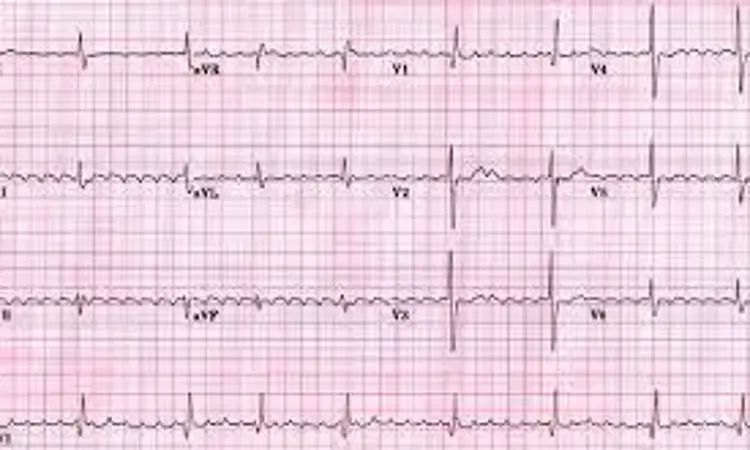- Home
- Medical news & Guidelines
- Anesthesiology
- Cardiology and CTVS
- Critical Care
- Dentistry
- Dermatology
- Diabetes and Endocrinology
- ENT
- Gastroenterology
- Medicine
- Nephrology
- Neurology
- Obstretics-Gynaecology
- Oncology
- Ophthalmology
- Orthopaedics
- Pediatrics-Neonatology
- Psychiatry
- Pulmonology
- Radiology
- Surgery
- Urology
- Laboratory Medicine
- Diet
- Nursing
- Paramedical
- Physiotherapy
- Health news
- Fact Check
- Bone Health Fact Check
- Brain Health Fact Check
- Cancer Related Fact Check
- Child Care Fact Check
- Dental and oral health fact check
- Diabetes and metabolic health fact check
- Diet and Nutrition Fact Check
- Eye and ENT Care Fact Check
- Fitness fact check
- Gut health fact check
- Heart health fact check
- Kidney health fact check
- Medical education fact check
- Men's health fact check
- Respiratory fact check
- Skin and hair care fact check
- Vaccine and Immunization fact check
- Women's health fact check
- AYUSH
- State News
- Andaman and Nicobar Islands
- Andhra Pradesh
- Arunachal Pradesh
- Assam
- Bihar
- Chandigarh
- Chattisgarh
- Dadra and Nagar Haveli
- Daman and Diu
- Delhi
- Goa
- Gujarat
- Haryana
- Himachal Pradesh
- Jammu & Kashmir
- Jharkhand
- Karnataka
- Kerala
- Ladakh
- Lakshadweep
- Madhya Pradesh
- Maharashtra
- Manipur
- Meghalaya
- Mizoram
- Nagaland
- Odisha
- Puducherry
- Punjab
- Rajasthan
- Sikkim
- Tamil Nadu
- Telangana
- Tripura
- Uttar Pradesh
- Uttrakhand
- West Bengal
- Medical Education
- Industry
In AF, rivaroxaban tied with an increased risk of major ischemic or hemorrhagic events: Study

Anticoagulation with rivaroxaban for patients with atrial fibrillation aged 65 years or more is associated with more risk for major ischemic and hemorrhagic events compared with apixaban, according to data published in JAMA.
The comparative effectiveness of rivaroxaban and apixaban, the most frequently prescribed oral anticoagulants for ischemic stroke prevention in patients with atrial fibrillation, is uncertain.
A study was conducted to compare major ischemic and hemorrhagic outcomes in patients with atrial fibrillation treated with rivaroxaban or apixaban.
Retrospective cohort study using computerized enrollment and claims files for US Medicare beneficiaries 65 years or older. Between January 1, 2013, and November 30, 2018, a total of 581 451 patients with atrial fibrillation began rivaroxaban or apixaban treatment and were followed up for 4 years, through November 30, 2018. Rivaroxaban (n = 227 572) and apixaban (n = 353 879), either standard or reduced dose.
The primary outcome was a composite of major ischemic (stroke/systemic embolism) and hemorrhagic (intracerebral haemorrhage/other intracranial bleeding/fatal extracranial bleeding) events. Secondary outcomes were nonfatal extracranial bleeding and total mortality (fatal ischemic/hemorrhagic event or other death during follow-up). Rates, hazard ratios (HRs), and rate differences (RDs) were adjusted for baseline differences in comorbidity with inverse probability of treatment weighting.
The Results of the study are:
Study patients (mean age, 77.0 years; 291 966 [50.2%] women; 134 393 [23.1%] receiving reduced dose) had 474 605 person-years of follow-up (median [IQR] of 174 [62-397] days). The adjusted primary outcome rate for rivaroxaban was 16.1 per 1000 person-years vs 13.4 per 1000 person-years for apixaban (RD, 2.7 [95% CI, 1.9-3.5]; HR, 1.18 [95% CI, 1.12-1.24]). The rivaroxaban group had increased risk for both major ischemic events (8.6 vs 7.6 per 1000 person-years; RD, 1.1 [95% CI, 0.5-1.7]; HR, 1.12 [95% CI, 1.04-1.20]) and hemorrhagic events (7.5 vs 5.9 per 1000 person-years; RD, 1.6 [95% CI, 1.1-2.1]; HR, 1.26 [95% CI, 1.16-1.36]), including fatal extracranial bleeding (1.4 vs 1.0 per 1000 person-years; RD, 0.4 [95% CI, 0.2-0.7]; HR, 1.41 [95% CI, 1.18-1.70]). Patients receiving rivaroxaban had increased risk of nonfatal extracranial bleeding (39.7 vs 18.5 per 1000 person-years; RD, 21.1 [95% CI, 20.0-22.3]; HR, 2.07 [95% CI, 1.99-2.15]), fatal ischemic/hemorrhagic events (4.5 vs 3.3 per 1000 person-years; RD, 1.2 [95% CI, 0.8-1.6]; HR, 1.34 [95% CI, 1.21-1.48]), and total mortality (44.2 vs 41.0 per 1000 person-years; RD, 3.1 [95% CI, 1.8-4.5]; HR, 1.06 [95% CI, 1.02-1.09]). The risk of the primary outcome was increased for rivaroxaban in both those receiving the reduced dose (27.4 vs 21.0 per 1000 person-years; RD, 6.4 [95% CI, 4.1-8.7]; HR, 1.28 [95% CI, 1.16-1.40]) and the standard dose (13.2 vs 11.4 per 1000 person-years; RD, 1.8 [95% CI, 1.0-2.6]; HR, 1.13 [95% CI, 1.06-1.21]) groups.
Thus, the researchers concluded that among Medicare beneficiaries 65 years or older with atrial fibrillation, treatment with rivaroxaban compared with apixaban was associated with a significantly increased risk of major ischemic or hemorrhagic events.
Reference:
Association of Rivaroxaban vs Apixaban With Major Ischemic or Hemorrhagic Events in Patients With Atrial Fibrillation by Wayne A. Ray, et al. published in the JAMA.
https://jamanetwork.com/journals/jama/article-abstract/2787319
Dr. Shravani Dali has completed her BDS from Pravara institute of medical sciences, loni. Following which she extensively worked in the healthcare sector for 2+ years. She has been actively involved in writing blogs in field of health and wellness. Currently she is pursuing her Masters of public health-health administration from Tata institute of social sciences. She can be contacted at editorial@medicaldialogues.in.
Dr Kamal Kant Kohli-MBBS, DTCD- a chest specialist with more than 30 years of practice and a flair for writing clinical articles, Dr Kamal Kant Kohli joined Medical Dialogues as a Chief Editor of Medical News. Besides writing articles, as an editor, he proofreads and verifies all the medical content published on Medical Dialogues including those coming from journals, studies,medical conferences,guidelines etc. Email: drkohli@medicaldialogues.in. Contact no. 011-43720751


